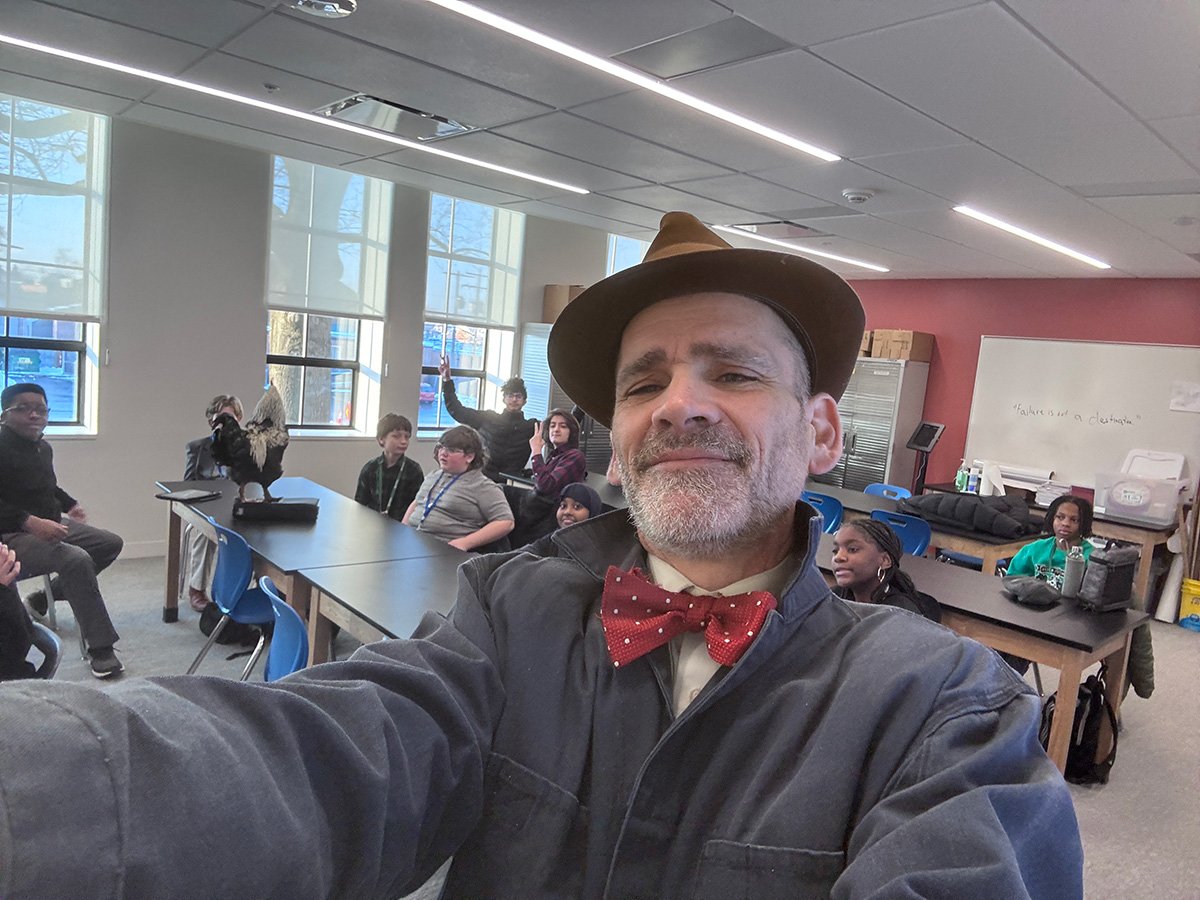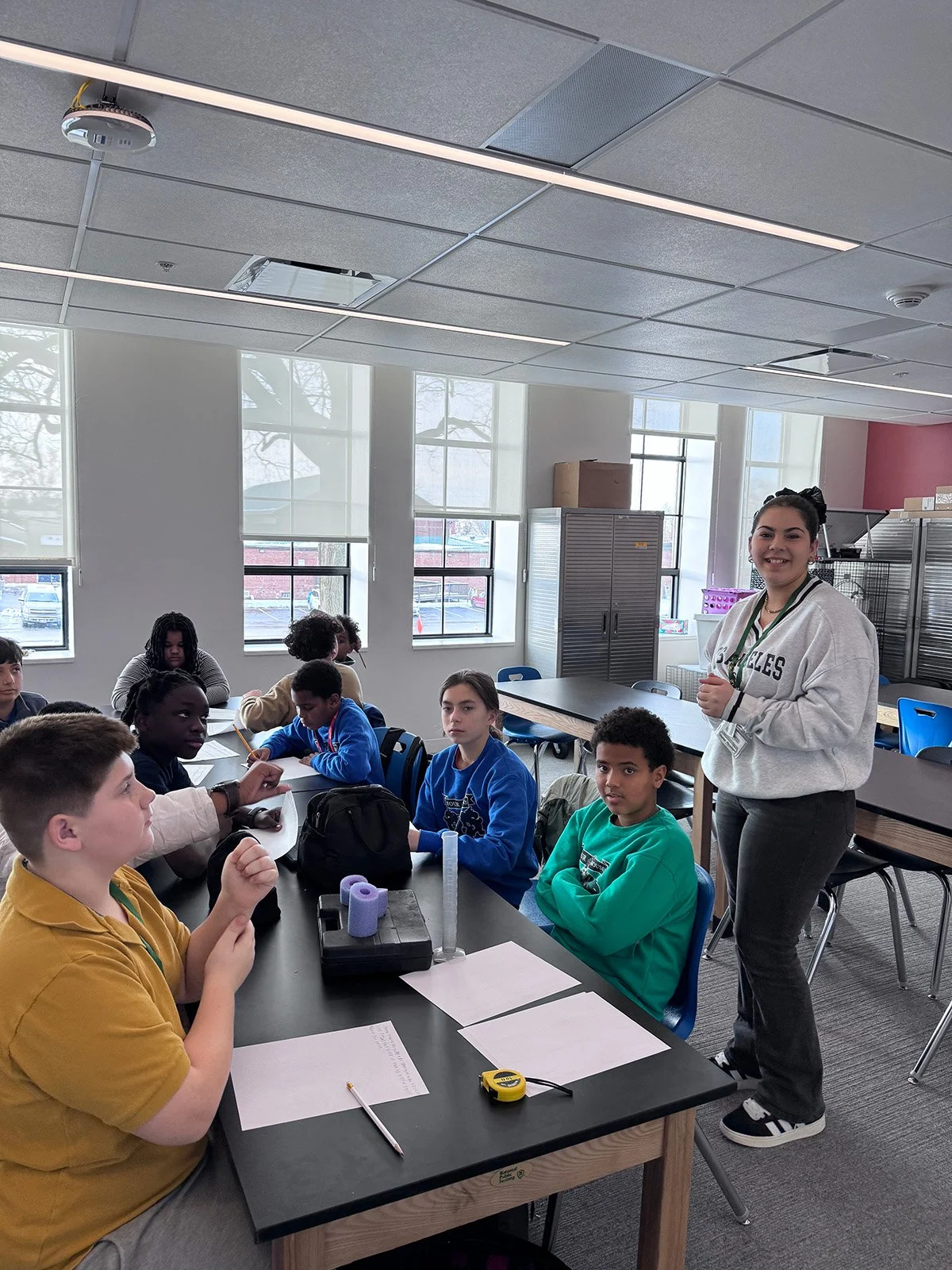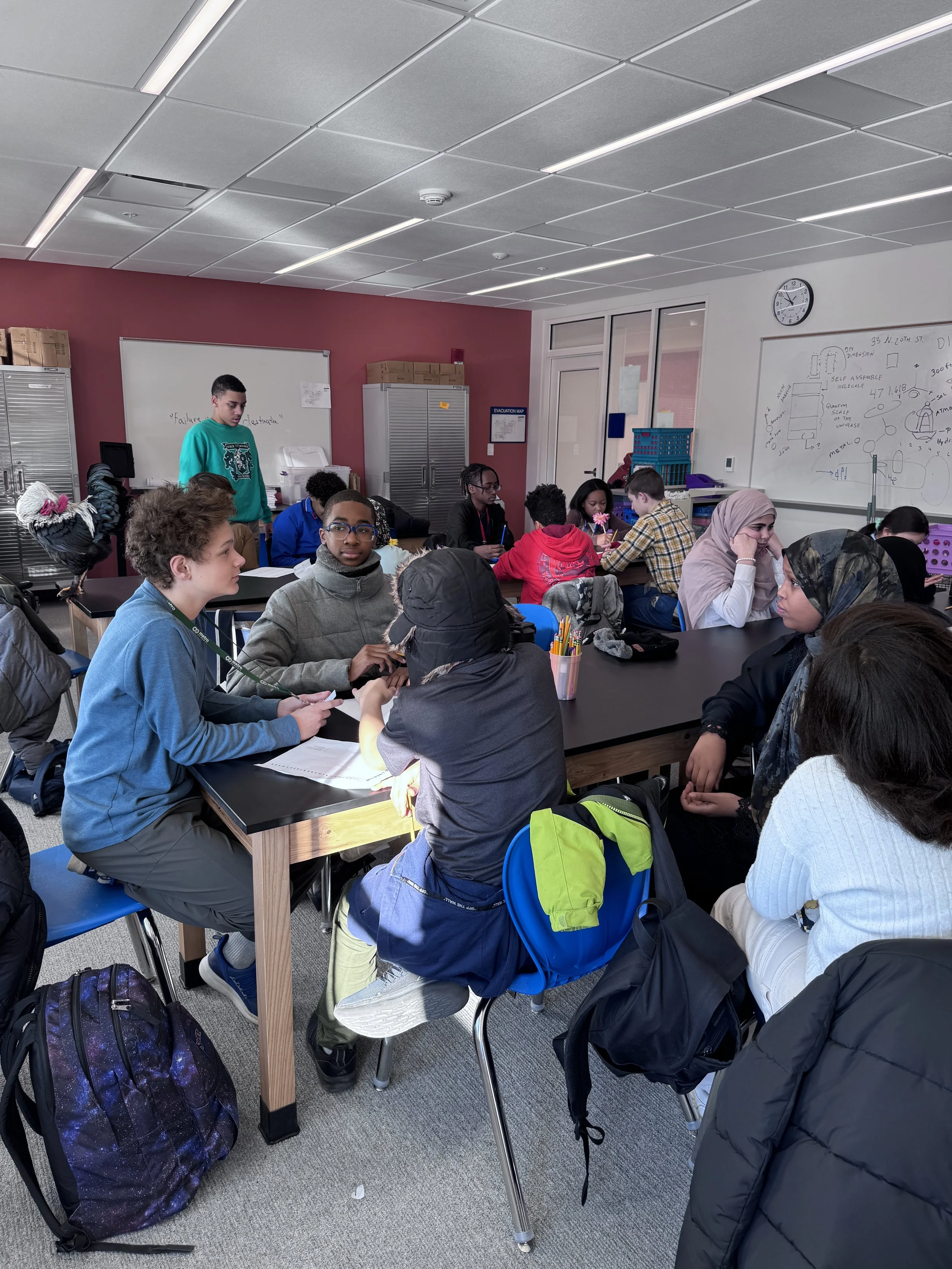The Rules For Engagement
When I told these students they were not showing up in my data (1st Period) their dynamics changed.
This is a hybrid blogpost and slide entry for my proposed roundtable on my “Sustainability in Nature” class at Metro Schools this January. I have nine days to teach about sustainability, science, technology, engineering, math, farming, economics, discipline, and computer science. No big deal! This is the Rules for Engagement.
Let Them Be Heroes
This team is identifying a problem and creating a design thinking solution together in real time.
I have been trained by the PAST Foundation to subscribe to and deploy three rules for engagement when working with young minds.
Rule #1: Look for relevance to their world. Let them be the hero in their story, and let them find the problem they want to solve in the way they want to solve it.
Rule #2: Inole design constraints that reflect real-world issues or resources that they will either have or not — OR — they must find creative ways to supplement those resources or at least develop a path and a strategy to get them.
Rule #3: Once they are in motion, get out of the way. Adults represent both easy access to solutions, or barriers to the agency and resilience you are trying to build in these young minds.
If you are at all curious about the PAST Foundation or this hands-on, relevant problem-based, applied STEM methodology, I highly encourage you to read Dr. Annalies Corbin’s book, “Hacking School”. She does a really good job of laying out this strategy and I refer toi it quite often.
The Hidden Hand and The Use of Applied STEM
Of course, there are other variables that must be taken into account in a formal learning environment; Aligning to STEM and basic education standards, mastery, classroom group and individual impulse control, and the crazy mindset students adopt when the artifice of control disappears. The rules for engagement require the educator to discretely embed the seeds for all of this transformation into the design constraints that are given to the students. This is the hidden hand. There are three useful strategies I employ to accomplish this.
It MUST be subtle, and you must show patience.
Evidence supports the reality that often times students will be afraid of independent agency, and will wait for permission to act.
This can take up to two weeks to break or to get the kids to trust this new paradigm.
Other students will run with it. They are the natural leaders (I have a workshop to build this skill) and will thrive on the opportunity. Then there are the students that will see this as an opportunity to explore, push, and attempt to dissolve boundaries altogether. It’s OK, you are going to see this and it is natural. This is where MY personal boundary of experience and training is insufficient. Then, just like the I ask the kids to work together and identify their talent or the “right” person with the skills or knowledge to get the job done, I turn to a trained teacher.
Mentorship Matters, and It Is a Two-Way Street
I am blessed for this course with one of the best teachers and mentors, Deb Juracich. Mrs. Juracich is the ag science teacher at Metro Schools. She is guiding me on my journey to help me better understand formal education and the nature of the learning and evaluation space. She is also incredibly supportive of my desire to be a co-learner with these students. I have skills, but they have me beat in their numbers, energy, and the knowledge that they are the best hope at building a better future.
Deb, Metro middle School principal, Mark Sterner, and Metro Schools have given me the opportunity to grow learn, fail, and inspire with what I know best — in the environment they know best. They know I am there to have these students mentor me. I need these students to make me better and they want to know more. This course is called “Sustainability in Nature” for a reason; Unless everyone is getting something of value and usefulness, and nature gets her cut, this is not sustainable. This should be obvious, but I am not sure it is to our culture, yet.
Where Are We Going?
A student had the idea to ask students as a group what they thought they were going to learn today. What a great idea!
Problems to solve and 15 minutes to do it before they have to present
We are going for transformational energy. I want this experience to serve as practice for applied STEM and critical thinking “Muscle Memory” on what it is going to take to be a real cultural change agent in the coming decade. I aspire to encourage these students to explore ag, experience wonder, delight, disappointment, and confidence. I call this way of seeing the world the human Operating System (hOS).
The hOS has five components that need to exist to be an effective tool for creative and effective growth:
Self Awareness
Empathy
Agency
Curiosity/Creativity
Respect/Self-Respect
When we channel learning through the I/O experience of the hOS we get people who are flexible, adaptable, and confident. They are open to look at a problem, step back, look at the bigger picture and start using their innate critical thinking skills to reframe problems. They discover that (just like in math) when we create matrixes and transformations of objects, processes, and assumptions we make something knew. They USE the other things they learned in a day or even previously to solve new problems that will make them the hero of this story — THEIR story. This is the kernel at the heart of the Rules for Engagement.
Surprising Us With Insights and Forecasts
Students know that as an urban farmer, I have to wear more than one hat. So they took it upon themselves to split into teams. They created a prototype team, a marketing team, and a business team. They worked together to pick a single design idea to get behind, started building a brand and a slogan, and even predicting and mapping production costs and sale pricing to optimize sustainability. Mrs. Deb and I were both surprised and delighted. What a great day!
Because this all happened organically, and the students seemed to love the free agency to self-identify as a member who could contribute to the group as a whole in their chosen capacity, we extended this experience to all four periods. The results were spectacular and served to address a very real issue to the students. Read the next blog post, Recycle, Reuse, Reduce in Action to find out more.






